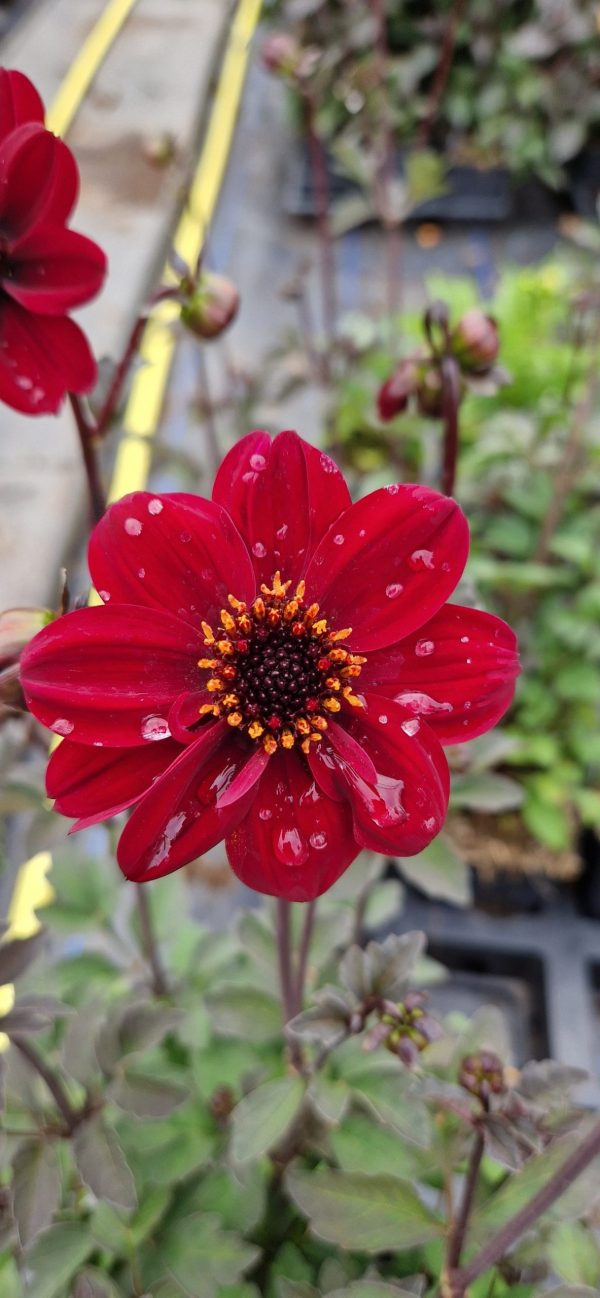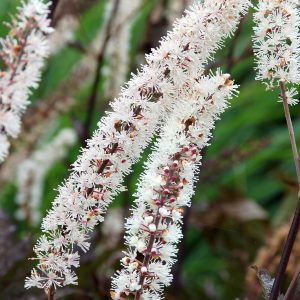PLEASE NOTE: YOUR PLANT WILL BE SUPPLIED CUT BACK
Dahlia ‘Bishop of Auckland’
£6.45
A superb dahlia with velvety crimson-red flowers and bright yellow anthers over dark red-green leaves. Height 90cm. Spread 75cm. Flowers July to October. Full sun, moist, well-drained soil. Mulching recommended in winter.
Description
Dahlia ‘Bishop of Auckland’ is a striking variety, known for its velvety crimson-red flowers and bright yellow anthers, making it a perfect addition to any garden. This compact and beautiful plant grows to a height of 90cm and blooms from July to October, providing a stunning display of colour throughout the summer and into the autumn months.
PLANTING and AFTERCARE GUIDE
Best Planting Time
Spring: The best time to plant Dahlia ‘Bishop of Auckland’ is during the spring when the soil has warmed up and the risk of frost has passed. This allows the tuber to establish its roots and prepare for a full growing season, resulting in healthy growth and a vibrant display of flowers.
Late Spring: If you are planting in a cooler region, wait until late spring to plant your Dahlia ‘Bishop of Auckland’. This will help ensure that the plant avoids frost damage and has plenty of time to bloom through the summer and autumn months.
Site Selection
Sunlight: Dahlia ‘Bishop of Auckland’ thrives in full sun, which promotes vigorous growth and abundant flowering. Choose a sunny spot that receives at least 6 hours of direct sunlight each day. This will ensure that the plant gets the light it needs to produce vibrant flowers.
Soil: Well-drained, fertile soil is essential for Dahlia ‘Bishop of Auckland’ to flourish. The plant does not tolerate waterlogged soil, so it is crucial to ensure proper drainage. Incorporating organic matter like compost will improve soil structure and drainage, allowing the plant to develop strong roots and healthy blooms.
Planting Instructions
- Prepare the Hole: When planting Dahlia ‘Bishop of Auckland’, dig a hole that is about twice the width and the same depth as the tuber. This gives the plant enough space for the roots to spread and grow.
- Soil Preparation: Mix compost or organic matter into the soil to enhance fertility and improve drainage. This nutrient-rich environment will support healthy growth and abundant flowering.
- Planting the Tuber: Place the tuber into the prepared hole, ensuring that the growing buds are facing upwards. Cover the tuber with soil, firming it gently to remove any air pockets. Be sure not to bury the tuber too deeply, as it needs some exposure to the surface.
- Watering After Planting: Water the plant thoroughly after planting to help settle the soil around the tuber. Ensure the soil drains well, as Dahlia ‘Bishop of Auckland’ does not like sitting in waterlogged conditions.
Watering Requirements
Growing Season: Dahlia ‘Bishop of Auckland’ requires regular watering during the growing season, especially during dry spells. Water deeply, allowing the soil to dry out slightly between waterings. Be careful not to overwater, as excess moisture can lead to root rot.
Dormant Season: In the dormant season, reduce watering significantly. Dahlia ‘Bishop of Auckland’ requires minimal moisture during this time. Only water if the soil becomes excessively dry.
Feeding
Spring: Apply a balanced, slow-release fertiliser in early spring to give your Dahlia ‘Bishop of Auckland’ a healthy start to the growing season. This helps support strong root growth and encourages lush foliage and blooms.
Mid-Summer: A light feeding in mid-summer can help encourage continued flowering and support the plant’s growth during its peak blooming period. Choose a fertiliser that is higher in potassium and phosphorus to promote better flower production.
Pruning
Deadheading: Regularly remove spent flowers from Dahlia ‘Bishop of Auckland’ to encourage the growth of new blooms. Deadheading helps keep the plant tidy and prolongs the flowering period.
Autumn Pruning: After the final blooms of the season, cut the plant back to ground level in preparation for winter dormancy. This will help protect the plant from pests and diseases over the winter months.
Mulching
Spring: Apply a layer of mulch around the base of your Dahlia ‘Bishop of Auckland’ in spring. Mulch helps retain moisture, suppress weeds, and regulate soil temperature, creating the perfect growing conditions for your plant.
Winter: In colder climates, it’s important to mulch around the plant in winter to protect the tuber from freezing temperatures. This will help the plant survive the cold months and support strong growth when it blooms again in the following season.
Supporting the Plant
Staking: Dahlia ‘Bishop of Auckland’ can grow tall and may require staking to keep its stems upright. Install stakes early in the growing season to prevent damage from wind or heavy flowers. This will help support the plant as it grows and ensures the flowers remain upright and intact.
Final Tips
Dahlia ‘Bishop of Auckland’ is a beautiful, low-maintenance plant that adds dramatic color and texture to any garden. By planting it in full sun, providing well-drained, fertile soil, and following these care tips, you’ll enjoy a stunning display of crimson-red blooms with bright yellow anthers from July to October. This variety is ideal for adding bold, eye-catching colour to your garden throughout the summer and into the autumn months.
Additional information
| Pot Size |
|---|











Hobbs Emma (verified owner) –